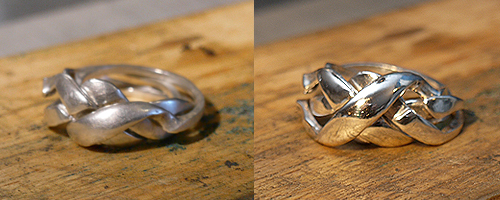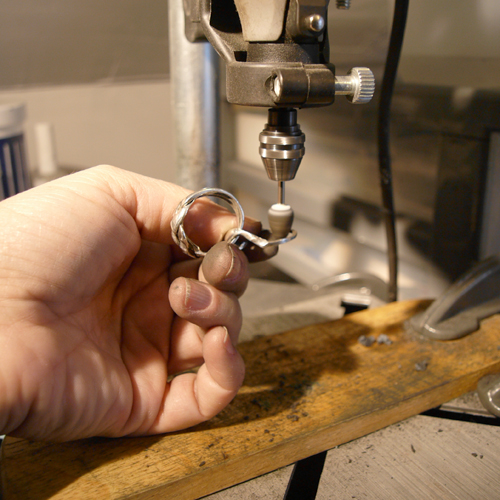Sterling silver is beautiful isn’t it? It’s a cool and luminous metal known for its bright white colour. Two important things about standard sterling silver right off the bat is that it tarnishes relatively quickly, and it produces firescale when it’s heated. So for those of you who follow my work, you know that I solder pieces which means it takes time to work and remove the firescale. Plus the finished items need to be stored in tarnish resistant bags which have a shelf-life. Sterling is a popular replacement for white gold because of it’s affordability. With Argentium® now sterling silver has more in common with the features that people like about white gold. Although this new allow was made available in the 90’s it has taken years for suppliers and jewellers to accecpt, and then offer to their customers. In this case I think this change in the industry is all good.
Would you consider paying a slightly higher price to buy Argentium jewellery knowing that you don’t need to care and fuss over it like with old-school sterling silver?
Pure or fine silver is 99.95% silver (the purest available) and is too soft to use for everyday jewellery and other functional items, it’s susceptible to scratching, denting, and losing it’s shape (just like solid 24k gold). Standard sterling silver contains 92.5% silver and 7.5% copper, this alloy makes the silver harder and more durable.
Agentium® is a relative newcomer, this alloy replaces most (but not all) of the copper with metalloid germanium. It has the same advantages as standard sterling, but since it’s an updated silver product it’s been greatly improved and was created specifically to tarnish very slowly, and it’s faster and easier to solder with. In 1990 Argentium® was developed by Peter Johns of the Art and Design Research Institute of Middlesex University, England. Argentium Silver Company owns the patent and trademark for the alloy.
I haven’t started working with Agentium® just yet. It may work out that some of the increase in cost will be offset by the reduced amount of time it takes me to fabricate the pieces. I guess I’ll just have to try it and see. I think that this modern sterling will be a welcome addition and possibly bring back some of the love lost for sterling silver with it’s improved features.
Would you wear more sterling silver if it was less high maintenance?
Let me know in the comments below what your thoughts are about wearing silver, sterling silver, and the newish silver alloy Agentium®.




